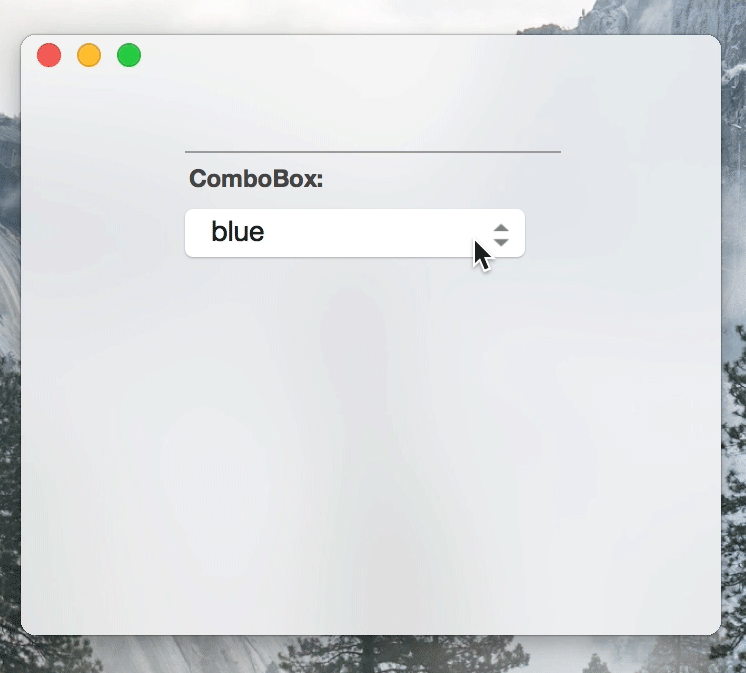-
Notifications
You must be signed in to change notification settings - Fork 36
ComboBox
Eonist edited this page Mar 20, 2017
·
4 revisions
Case study of the ComboBox component

swift:
let xml = FileParser.xml("~/Desktop/assets/xml/combobox.xml".tildePath)
let dp:DataProvider = DataProvider(xml)
let combobox = addSubView(ComboBox(170,104,24,dp,false,0,self))- Figure out how to listen to mouseEvents outside and inside NSWindow (maybe use local and global monitors)
- try to open the popover window when the origin window is in fullscreen mode (works)
- on click outside of the popup window needs to be recorded
- click a button in popupWin sends an event and then closes it self
- the popupWindow needs to be stored somewhere, maybe in a static variable or somewhere else in the Element framework
- Make an universal alignment method for aligning windows, you can probably use the regular Align method here with a zeroSize and CGPoint and TopCenter as the alignment type
- try to animate the popup effect
- the popupwin must have an init with size and position,
- populate the window with a List/SliderList
- hock up the List event
- create the ComboBoxPopUpWindow
- you need a method that checks available space for the popup to be shown in (measure screen vs origin-pos vs popup-size) <--do some doodling etc
- 4px top and bottom margin for the comboboxwin, to avoid clipping the rounded corners
- blue color when selected, white text when selected.
- Try to align the comboboxwin with simple means first -> 1. find the bottom left pos of the combobox header button, 2. convert this position into screen coordinates -> similar to how you did draggin windows etc
- to create an universal alignment method you need 2 alignment types passed to the PopUpWin and then PopUpwin will take care of the rest
- Research close animation for NSWindow
- Implement SliderList instead of List